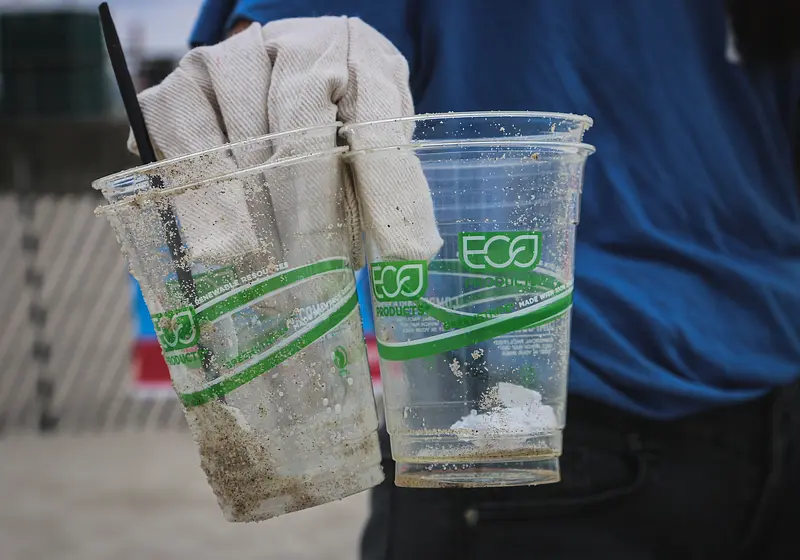If saving the planet was only as easy as purchasing a tote bag with 'Save the Earth' in pastel fonts, we would already be living in a utopia. Unfortunately, it isn't. Greenwashing is when those good intentions are made to profit some companies that mislead you into believing their products are eco-friendlier than they are. Thus, think of greenwashing as when companies slap a leaf on the packaging and consider that as done.

Image Credits: Noah Buscher from Unsplash
Let us slide into your dms 🥰
Get notified of top trending articles like this one every week! (we won't spam you)What Is Greenwashing?
Greenwashing is an art of deception. This is when companies advertise themselves as environmentally friendly, while in practice, they still engage in practices that are potentially destructive to the planet. It's like slapping a 'vegan' label onto a soda can—it may be true, but it doesn't really matter. It was first coined by environmentalist Jay Westerveld in the 1980s, but over the last several decades, it has evolved into taking shape as a marketing strategy aimed at capturing conscious and aware consumers.

Take the Quiz: What Candle Scent Matches Your Overall Aesthetic?
Halloween is just around the corner. It's time to light that candle. Take this quiz and find out what candle scent suits you best.
The Tricks They Use
Brands will pull the wool—or should we say ‘organic cotton’—over your eyes like this:
Vague Buzzwords
Terms like ‘natural,’ ‘eco-friendly,’ and ‘green’ are most times slapped onto products with no official certification to back them up. A brand that does not explicitly state how it’s sustainable is arguably not. Many brands toy with feel-good terms that give the impression of sustainability without changing how they make things.
Phony Certificates and Labels
Some brands create their own ‘certifications’ that look official but mean absolutely nothing. Look for third-party verified labels: Fair Trade, USDA Organic, and FSC-certified paper. If a product claims to be sustainable and there’s no independent verification to be found, be cautious.
Disguise the Big Picture
A company might brag about recyclable packaging while easily ignoring that its factories are dumping toxic waste into rivers. Is it biodegrading? Probably not. Brands often pick and choose one eco-friendly aspect of their business to cloak the larger suffering inflicted by their business on the planet.
'Less Bad’ Perception
Simply being ‘50% less plastic’ doesn’t make a product good for the environment. It merely makes it somewhat less bad. This plays into consumer guilt and skims by. Oh, it’s just like saying, “We used to be awful; now we are just slightly less awful. You’re welcome.”
Green Aesthetics
Brands are aware that earth tones used in minimalist packaging scream sustainability. But don’t be fooled by beige boxes and leafy logos—it’s what’s inside that truly matters. Packaging might look eco-friendly, but unless it’s materialized and its ingredients are truly sustainable, it’s nothing more than a clever disguise.

Image Credits: Getty Images from Unsplash
Why Do Brands Greenwash?
One might wonder why companies don't just go that extra mile to be completely sustainable. The joke is also on these brands! It is simply because of money.
Sustainability sells, and companies today know that Gen Z and millennials are willing to pay extra for it. Therefore, rather than make structural changes in productions, it seems easier, less costly, and safer to pull some stunts on marketing.
Greenwashing also allows companies to escape strict environmental regulations through the pretense of compliance. If companies can convince consumers and policymakers that they are already doing “enough” for the environment, they can go about business as usual with little pressure for real reform.
How to Spot (and Avoid) the Greenwash
Transparency: Companies genuinely committed to sustainability will have their environmental impact reports ready. If a company has nothing to hide, sharing sustainability data is standard practice.
Real Certification: Labels, granted by credible and trusted organizations, which allow for sustainable and environmentally sound practices. Be aware of consultancy-style invented ‘eco-friendly’ labels.
Research: A quick Google search should be enough to verify the authenticity of a brand's claims. Look for independent reviews or watchdog reports.
Beyond Packaging: A green bottle doesn't mean the product inside it is green. Think through the product's life cycle: how is it made, distributed, and disposed of?
The Bottom Line
Shopping as an environmentally conscious consumer isn't an easy must-do. The next time you're out shopping, don't just get suckered into a nice little green label—question it. Ask yourself: Is that brand doing anything meaningful, or is it just making me feel that I am?
Because if buying an 'eco-friendly' shampoo bottle could be the solution to saving the planet, we wouldn't be at this point, anyhow.
And now, go smart shopping—Mother Earth is relying on that.












